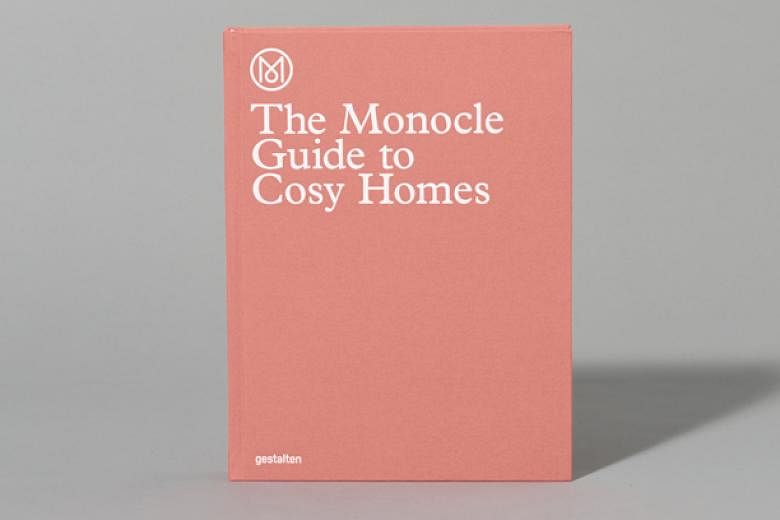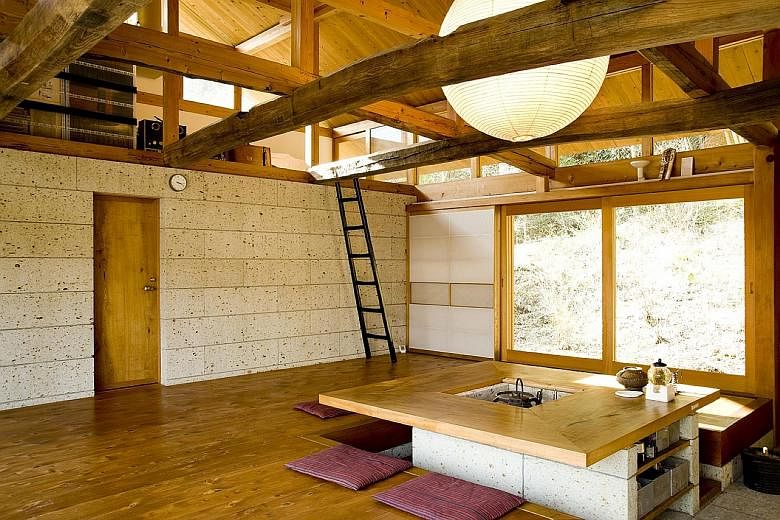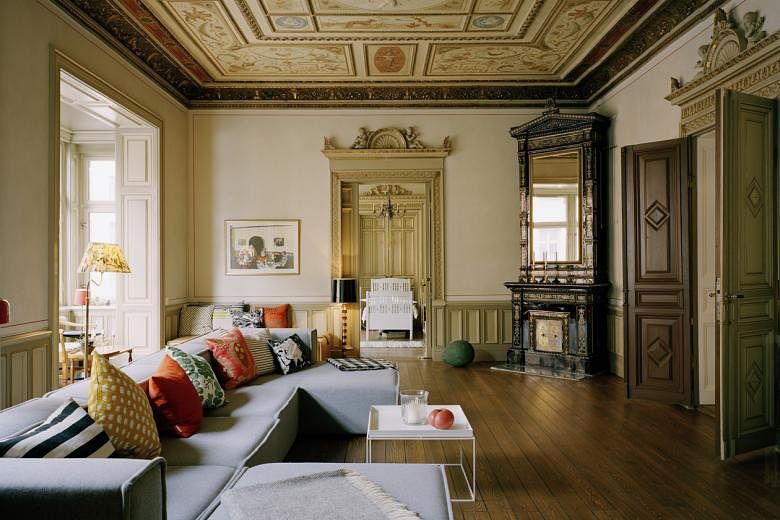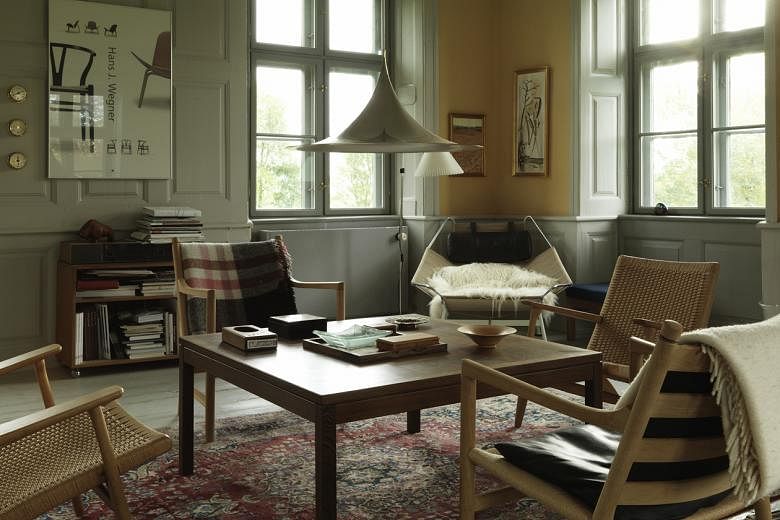The Monocle Guide To Cosy Homes, a recently released interior handbook, wants to stand apart from the typical glossy interior magazine.
Eschewing interiors set up for a perfect photograph, the book's introduction reads: "Architects, stylists and photographers work together to create a picture that misses out on the key fact: homes are for living in."
So, instead of creating mocked-up interiors, writers went on a global search and found 33 actual, lived-in homes that pull off a cosy yet chic vibe. They spent about eight years putting the book together.
The range of homes is diverse - from a sprawling family estate on Denmark's Funen Island that belongs to Knud Erik Hansen, managing director of famed Danish furniture company Carl Hansen & Son, to apartments inside Marina City, a mixed-use complex in Chicago featuring two corn cob- shaped towers.
No home stylist or groomer was sent in, as the book's editors opted for an au naturel look.
The 400-page book, published by Gestalten, is the third in a series of Monocle guides. The first, The Monocle Guide To Better Living, was released in 2013, while The Monocle Guide To Good Business was published last year.
The series' editor Andrew Tuck, 52, says of the homes picked: "This is people's lives unfolding in houses. They're so diverse, but there's something that unites them - they were built either by architects who were passionate about building proper homes or by people who often have two or three generations live there through the years."
He is also editor of the Monocle magazine, which has features on current affairs, business, culture and design. It is part of the Monocle media brand, which is also known for its 24-hour radio station, annual publications and retail spaces around the world.
For the guide, the team picked homes that were tidy and where the inhabitants lived well.
Tyler Brule, 47, Monocle's editor- in-chief who wrote the book's foreword, explains: "Cosy is not twee, or your aunty or granny's house, but it is about feeling enveloped and secure in a place that you want to linger. Those factors were part of the commissioning process."
Both Tuck and Brule were in town recently for the book's launch.
Aside from stunning homes, which come under a section titled The Residences, there are two other sections to browse through.
For advice on creating a home, flip to Home Truths, which has 21 essays from well-known design industry stalwarts and critics.
For example, British design critic and author Stephen Bayley shares his story about welcoming Japanese fashion giant Issey Miyake to his bare-bones house - he had no chairs or lights.
If you like the interiors, the book doles out nuggets of information in The Directory. Here, readers get an extensive insider list, which includes dream neighbourhoods to live in; design streets around the world to shop for the home; design stores to see; and a list of designers and architects to call.
Singapore is featured in the guide as well. Architectural firm Formwerkz gets a mention for "building proper homes that fit occupants' needs and lifestyles, not houses that will fetch large sums when resold".
And Chip Bee Gardens is painted as a quaint neighbourhood where the "buildings are one of the nicer hangovers" from colonial rule.
Indeed, Monocle liked the area so much, it set up a retail shop and Singapore bureau there last year.
Tuck hopes the book will convince home owners to spend time crafting a space that they will live in for a long time.
"In this world where everyone's talking about making a fast buck through property, it's all about the developer and how much money you're going to get for your apartment," he notes.
"In a way, the book is a quiet message: Make a home you want to live in, where your kids can grow up and dogs run wild. Don't be too precious about your homes."
- The Monocle Guide To Cosy Homes is available for $80 at The Monocle Shop Singapore (74 Jalan Kelabu Asap, tel: 6475-1791), and at monocle.com for £40 (S$84.50).





